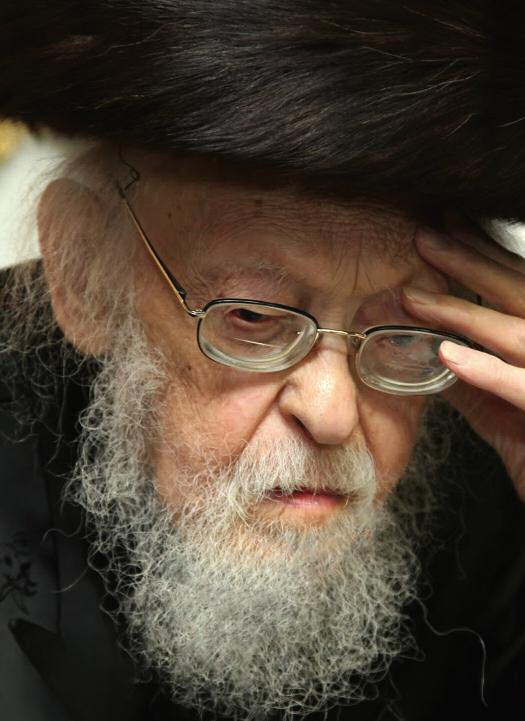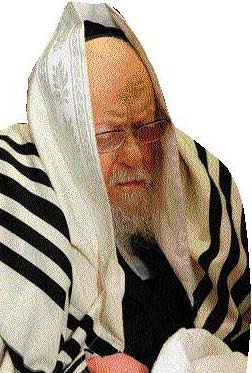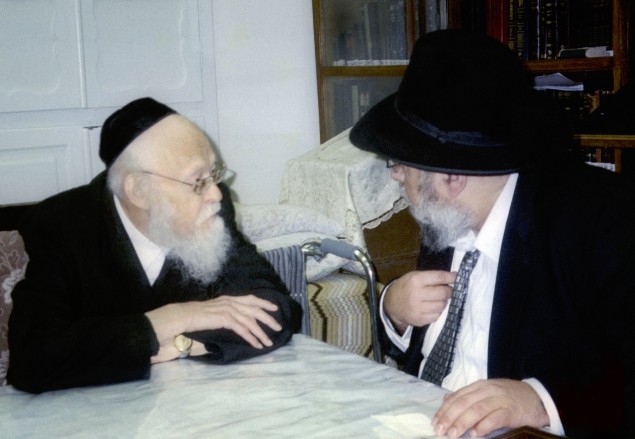The Great Sar HaTorah
By Aryeh Z. Ginzberg
A Tribute to Rav Yosef Shalom Elyashiv on His First Yahrtzeit
A few weeks after I arrived in Eretz Yisrael in 1974 to learn in Yeshiva Chofetz Chaim, I received a heartfelt letter from a kollel fellow I knew.
The letter detailed the difficulties that he and his wife were undergoing, as her last three pregnancies had ended in miscarriages and doctors could not identify the cause. The couple had heard about a mekubal in Netivot who dispensed bottles of water rumored to prevent miscarriages. Since I was the only one he knew living in Eretz Yisrael at the time, he asked if I could travel to Netivot, obtain a few bottles of water from the mekubal and send them to him.
In those days, a round trip from Yerushalayim to Netivot required at least six hours. Moreover, with the inevitable long lines at the mekubal’s home, I could expect the trip to take all day. I wasn’t sure what to do: Should I give up an entire day of learning in yeshivah for this act of chesed?
When I asked the mashgiach of the yeshivah, Rabbi Avrohom Kanarek, for advice, he recommended that I present the she’eilah to a posek in Meah Shearim who at the time was not known outside of the small circle of scholars in Yerushalayim. His name? Rav Yosef Shalom Elyashiv.
I went to see Rav Elyashiv and upon hearing my she’eilah, he said, “I am not personally familiar with the practice of dispensing water as a segulah, nor with the people who do so. However, there is a concept in Chazal that “Tzaddik gozeir, v’Hakadosh Boruch Hu mekayem” [What a righteous person decrees, the Almighty makes happen]. Therefore, if a true tzaddik decrees that if one drinks from a certain cup of water, berachot will come from it, then I strongly suggest he drink to the very last drop.” I then asked who, in his opinion, fits Chazal’s description of a “tzaddik.” Without any hesitation, he said, “The Steipler Gaon.” [The Steipler was the father of Rav Chaim Kanievsky and also Rav Elyashiv’s mechutan.] Since the Steipler lived in Bnei Brak, which was less than an hour from Yerushalayim, Rav Elyashiv suggested I travel there to obtain a berachah for this young couple.
I immediately traveled to Bnei Brak, with a letter in hand from Rav Elyashiv introducing me and stating the purpose of my visit. Upon showing the letter, I was seen immediately. After the Steipler read the letter, he smiled and said, “Di kumst fun Rav Elyashiv. Veist du vus iz by Rav Elyashiv? Kol pesakav min Shamayim hu.” (Loose translation: “You are coming from Rav Elyashiv. Do you know who Rav Elyashiv is? All of his halachic decisions come from Heaven above.”)
Having secured the berachah, on the ride back to Yerushalayim I contemplated the words that the “tzaddik of the generation” had just shared with me: the unassuming man in Meah Shearim was completely and totally dedicated to Torah. And his halachic decisions come from Heaven itself.
At that moment, I decided to spend as much time as I could with this great and holy man and absorb what I could from him. (Incidentally, approximately twenty years later, I was granted the honor of reciting a berachah under the chuppah at this young couple’s eldest daughter’s wedding).
And so, for the following sixteen months that I was in yeshivah in Eretz Yisrael, I visited with Rav Elyashiv several times a week. Ultimately, I was blessed with the great zechut of having a regular seder with him every Motzaei Shabbat, where I would present halachic questions to him that I received from all over Yerushalayim.
In the ensuing years, after I returned to the States, I made sure to return to Eretz Yisrael several times a year to visit with Rav Elyashiv and present she’eilot. Sometimes my stay in the country was only twenty-four-hours long, for I came for the sole purpose of seeing him. Over the past four decades, I obtained more than 3,000 of his halachic rulings.
Rav Elyashiv’s remarkably disciplined way of life—day in and day out, decade after decade—underscores the exalted level a human being can attain even in this lowly physical world.
Observing Rav Elyashiv respond to she’eilot was a breathtaking experience. At one point, I witnessed the rav answer she’eilot successively for a period of almost three hours. These were not simple she’eilot, but complex questions covering a range of topics. A group of prestigious sofrim arrived to discuss a complicated issue in safrut; they were followed by experts in shemittah, then representatives of a mikvah organization arrived to discuss the construction of a mikvah. Each she’eilah was answered within minutes, and with the utmost clarity, attesting to Rav Elyashiv’s mastery of every aspect of Torah.
A well-known story about Rav Elyashiv demonstrates the breathtaking scope of his Torah genius. A renowned Torah scholar had just published a sefer—which he had worked on for ten years—on Masechet Ohalot, one of the most complicated areas of Torah. The scholar came to show his sefer to Rav Elyashiv. The two of them then engaged in an in-depth conversation. A little while later, the scholar, looking dejected, emerged from Rav Elyashiv’s home. Despite this scholar’s decade-long immersion in the subject matter, he realized that Rav Elyashiv had a much greater mastery of the topic.
Rav Elyashiv’s influence on my life was profound, and my appreciation for the depth and breadth of Torah has been greatly enhanced because of my relationship with him.
I remember once escorting Rav Elyashiv to the funeral of the rosh yeshivah of Brisk, which consisted of a ten-minute walk to the yeshivah, a twenty-minute stay at the levayah and a ten-minute walk home. Throughout the forty-minute period, people constantly approached him, asking she’eilot. I had a pen and a notepad in hand and tried to record every she’eilah and teshuvah. Upon returning to yeshivah, I was astounded to discover that in those forty minutes, Rav Elyashiv had answered more than seventy she’eilot touching upon the entire gamut of Torah, exhibiting his colossal and breathtaking knowledge.
It has been noted in numerous newspaper articles that from the age of twelve until approximately six months before his passing at 102, Rav Elyashiv strictly adhered to a routine. His daily regimen of learning began at 3:00 am and ended often past 11:00 pm. This didn’t change during times of war or peace, whether he was marrying off a child or, tragically, sitting shivah for a child—the learning never stopped. His bein hazmanim “vacation” meant more hours to learn and less time for the public.
The tremendous zechuyot his learning and his extraordinary hasmadah, diligence, brought to the world are beyond our comprehension; but his remarkably disciplined way of life—day in and day out, decade after decade—underscores the exalted level a human being can attain even in this lowly physical world.
I am writing these reflections on the plane while returning from a brief visit to Yerushalayim. This is the first time in almost forty years of my visiting Yerushalayim that I could not visit with Rav Elyashiv—the great Sar HaTorah of our generation. Yerushalayim is different; Klal Yisrael is different, and together with the Torah itself, we mourn the loss of this great treasure that is no longer. Yehi zichro baruch.
Rabbi Aryeh Z. Ginzberg is rav of the Chofetz Chaim Torah Center in Cedarhurst, New York.



